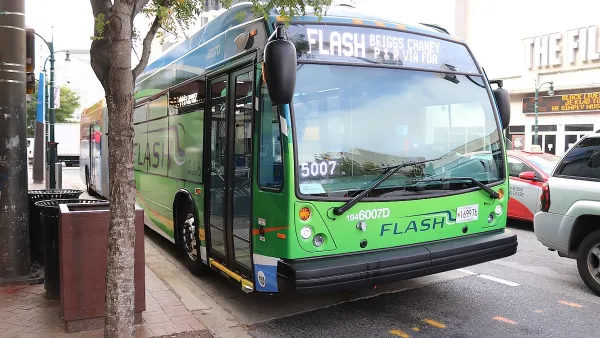An interview with a leader in technologies pushing energy
Tina Casey interviews Andy Haun, chief technology officer for Schneider Electric, a "legacy energy management company that still has a foothold in fossil fuels," but is also pioneering microgrid technology in places like Montgomery County, Maryland.
In the interview, Haun explains how the company’s cloud-based energy management platform is propelling the company’s renewable energy profile, explains Casey. According to Haun, microgid energy generation and automation go had in hand.
Our EcoStruxure system is tied to an edge controller, which works with the smart devices and facilitates their behavior. The difference is that we augment the edge controller with a cloud environment analytics engine, that gathers data from all the smart products, across the cloud services, and makes bigger, broader, smarter decisions.
Think of it like a symphony. You can have the best musicians, and they all know exactly what to do. But you can’t just say “go play” at them. It will sound awful.
The musicians don’t know what you’re hearing. They need a conductor. The conductor is aware of the audience, and can modulate the sound. So, the edge controller is like the conductor.
Haun also provides additional insight about the Microgrids program under the direction of the Montgomery County Office of Energy and Sustainability. Haun describes Schneider Electric's contribution to this program as "energy as a service."
A third party investor does the microgrid and all the infrastructure, so they own and operate the assets.
Montgomery pays the owner-operator the fee for the electricity, just like a utility. It’s like buying electricity off the meter, plus you get all the other services.
The system also improves over years, through cloud computing, which enables it to constantly adjust itself.
The wide-ranging interview also touches on questions of the role of conventional utilities in a microgrid-enabled energy future and the benefits of microgrids to reliability and resilience.
FULL STORY: The Renewable Energy Revolution, One Microgrid At A Time

Planetizen Federal Action Tracker
A weekly monitor of how Trump’s orders and actions are impacting planners and planning in America.

Restaurant Patios Were a Pandemic Win — Why Were They so Hard to Keep?
Social distancing requirements and changes in travel patterns prompted cities to pilot new uses for street and sidewalk space. Then it got complicated.

Map: Where Senate Republicans Want to Sell Your Public Lands
For public land advocates, the Senate Republicans’ proposal to sell millions of acres of public land in the West is “the biggest fight of their careers.”

Maui's Vacation Rental Debate Turns Ugly
Verbal attacks, misinformation campaigns and fistfights plague a high-stakes debate to convert thousands of vacation rentals into long-term housing.

San Francisco Suspends Traffic Calming Amidst Record Deaths
Citing “a challenging fiscal landscape,” the city will cease the program on the heels of 42 traffic deaths, including 24 pedestrians.

California Homeless Arrests, Citations Spike After Ruling
An investigation reveals that anti-homeless actions increased up to 500% after Grants Pass v. Johnson — even in cities claiming no policy change.
Urban Design for Planners 1: Software Tools
This six-course series explores essential urban design concepts using open source software and equips planners with the tools they need to participate fully in the urban design process.
Planning for Universal Design
Learn the tools for implementing Universal Design in planning regulations.
Heyer Gruel & Associates PA
JM Goldson LLC
Custer County Colorado
City of Camden Redevelopment Agency
City of Astoria
Transportation Research & Education Center (TREC) at Portland State University
Camden Redevelopment Agency
City of Claremont
Municipality of Princeton (NJ)





























